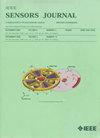An Adaptive Clustering Routing Protocol for Wireless Sensor Networks Based on a Novel Memetic Algorithm
IF 4.3
2区 综合性期刊
Q1 ENGINEERING, ELECTRICAL & ELECTRONIC
引用次数: 0
Abstract
Wireless sensor networks (WSNs), as an important part of the Internet of Things (IoT), have developed rapidly in recent years. WSNs comprise spatially distributed sensor nodes to collect information from the environment. The energy of nodes is usually limited, so the speed of energy consumption determines the lifespan of the network. This article proposed an energy-efficient adaptive clustering routing algorithm named multiparent differential evolution (MPDE) and variable step-size local search swarm-intelligence-based adaptive clustering routing (VSSLS-SIACR) to minimize the energy consumption of WSNs and prolong the network lifespan. Here, SIACR is a SIACR protocol, while MPDE and VSSLS are a novel memetic algorithms (MA) that belong to the swarm intelligence algorithm. The SIACR protocol classifies WSN nodes into three categories: cluster heads (CHs), cluster members, and free nodes, and employs the MPDE and VSSLS to optimize clustering, with the objectives of reducing energy consumption and balancing the residual energy among nodes. In the comparison experiments, the algorithm presented in this study was compared to the Low-Energy Adaptive Clustering Hierarchy (LEACH), LEACH-centralized (LEACH-C), and particle swarm optimization (PSO)-SIACR algorithms for two network topologies with three data fusion rates of 0, 0.5, and 1, respectively. The experimental results revealed that MPDE and VSSLS-SIACR outperformed the other algorithms in terms of network lifetime and residual energy. Meanwhile, it is demonstrated that the proposed algorithm is highly adaptable to different topologies and different data fusion rates. The PSO-SIACR algorithm performed similarly to the MPDE and VSSLS-SIACR algorithms, indicating that the SIACR is, furthermore, an effective framework for clustering routing optimization using swarm intelligence algorithms.求助全文
约1分钟内获得全文
求助全文
来源期刊

IEEE Sensors Journal
工程技术-工程:电子与电气
CiteScore
7.70
自引率
14.00%
发文量
2058
审稿时长
5.2 months
期刊介绍:
The fields of interest of the IEEE Sensors Journal are the theory, design , fabrication, manufacturing and applications of devices for sensing and transducing physical, chemical and biological phenomena, with emphasis on the electronics and physics aspect of sensors and integrated sensors-actuators. IEEE Sensors Journal deals with the following:
-Sensor Phenomenology, Modelling, and Evaluation
-Sensor Materials, Processing, and Fabrication
-Chemical and Gas Sensors
-Microfluidics and Biosensors
-Optical Sensors
-Physical Sensors: Temperature, Mechanical, Magnetic, and others
-Acoustic and Ultrasonic Sensors
-Sensor Packaging
-Sensor Networks
-Sensor Applications
-Sensor Systems: Signals, Processing, and Interfaces
-Actuators and Sensor Power Systems
-Sensor Signal Processing for high precision and stability (amplification, filtering, linearization, modulation/demodulation) and under harsh conditions (EMC, radiation, humidity, temperature); energy consumption/harvesting
-Sensor Data Processing (soft computing with sensor data, e.g., pattern recognition, machine learning, evolutionary computation; sensor data fusion, processing of wave e.g., electromagnetic and acoustic; and non-wave, e.g., chemical, gravity, particle, thermal, radiative and non-radiative sensor data, detection, estimation and classification based on sensor data)
-Sensors in Industrial Practice
 求助内容:
求助内容: 应助结果提醒方式:
应助结果提醒方式:


